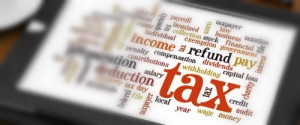 A common practice of any business irrespective of its size is the capitalization of costs of an asset that it buys. To put it in simpler terms, capitalization means the cost of an asset that is written off in the balance sheet over a number of years. Also be aware that capitalization rule is applicable on all assets regardless of the cost of the item. However, there are several ways a small business can accelerate the write-off process for every asset that has been purchased. Here we have listed the three popularly used methods.
A common practice of any business irrespective of its size is the capitalization of costs of an asset that it buys. To put it in simpler terms, capitalization means the cost of an asset that is written off in the balance sheet over a number of years. Also be aware that capitalization rule is applicable on all assets regardless of the cost of the item. However, there are several ways a small business can accelerate the write-off process for every asset that has been purchased. Here we have listed the three popularly used methods.
1. Section 179 Deduction
According to this rule, you can deduct the cost of the business machinery/equipment (asset) in the same year of purchase, instead of spreading the depreciation allowance over a period of five years or more. For the Section 179 deduction, the amount limit has been set to $500,000 for the years 2015 and 2016. There is a probability of the dollar limit going high in the coming year due to inflation.
The tax expensing rule is beneficial to small businesses as it applies to the purchases of new as well as pre-owned business assets. That is section 179 deduction may not be used to create an annual net operating loss. Expensing is applicable to office furniture, cell phones, machinery, laptops, and other equipment. Additionally, it can be used for the following items
- Qualified leasehold, retail and restaurant improvements up to $250,000 in the previous year (2015)
- Air-conditioners and heating units bought after 2015
- Off-the-shelf software
For the current year 2016, expensing has increased by two-fold. Therefore, $250,000 is no longer applicable.
2. Bonus Depreciation
Another commonly used tax write-off method is bonus depreciation. By using this method, a business can accelerate the rate of depreciation deduction. As per this method, 50% of the cost of the asset can be deducted for the year when it was put to use. It further states that 50% ceiling is applicable for the years 2015 through 2017. In 2018, the ceiling will come down to 40% and in 2019 it will move further down to 30%. This rule is likely to expire by end of 2019.
In this write-off method, deduction is applicable only to new purchases. Bonus depreciation was to be applicable for all business machinery, office equipment as well as buying of qualified lease hold improvements for the year 2015. While Bonus depreciation is not applicable for restaurants and retail property in 2015. However, from 2016 Bonus Depreciation will be applied to all the renovation made to the commercial premises.
Also note that for a very expensive item to written off, Bonus Depreciation can be combined with Section 179 as well as other regular depreciation rules.
3. De Minimis Safe Harbor
Another asset write-off method is the Safe Habor. Here the asset is treated as materials and office supplies. This method allows the cost of the assets to be deducted immediately but it cannot be added to the balance sheet. In 2015, the limit for using the Safe Harbor method was $500. However, the limit has been increased to $25,000 for the year 2016. If a small business wants to use this method of write-off, it has to attach an election statement at the time of filing. This should clearly state that the business would like to use this method each year.
The small businesses can use the above mentioned methods to write-off expenses for the business related purchases. What matter is when the asset was bought and not how it was bought. Therefore, it does not matter whether a credit card or cash was used to pay for the asset.


